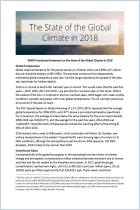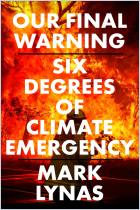Join getAbstract to access the summary!

Join getAbstract to access the summary!
World Meteorological Organization
WMO Statement on the State of the Global Climate in 2019
Multi-agency report highlights increasing signs and impacts of climate change in atmosphere, land and oceans
WMO, 2020
What's inside?
A 2019 WMO report details the impacts of climate change – humanity’s ultimate existential challenge.
Recommendation
Current “Global Climate Indicators” such as greenhouse gases, ocean and land temperatures, sea levels, ocean acidification, and ice cover point to an indisputable increase in global warming. This detailed WMO report describes the alarming state of climate change in 2019, including a shrinking ozone layer, heating oceans, sea level rise, severe storms, wildfires and drought. People on every continent feel the impacts, which include health issues, dislocations, ecosystem destruction and economic upheaval.
Summary
About the Author
The report’s contributors include WMO members, Data Centers, United Nations Agencies and a variety of individuals from scientific organizations and universities around the world.




















Comment on this summary